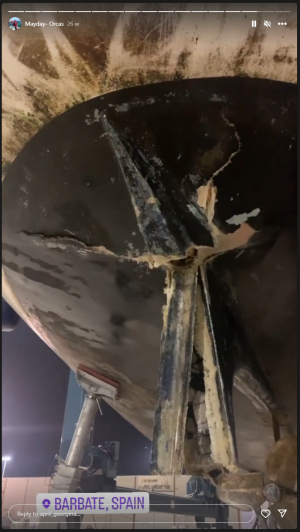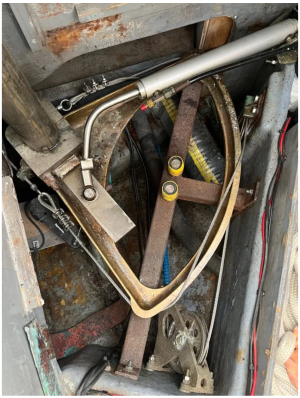Baggywrinkle
Well-known member
In view of the increasing number of incidents of boats having their rudders damaged or removed by Orcas, statistically this must be approaching the most likely form of catastrophic rudder loss or damage boats will be likely to encounter.
Reversing into rocks or shallows while med-mooring is probably the highest incidence of minor damage as pretty much every charter boat has done this at some point, and the rows of boats in my marina pulled out at seasons end having the rudder gelcoat fixed seems to bear this out - but total loss of steerage and water ingress seem to be a very real outcome of Orca encounters near the entrance to the Med.
So what to do? .... In the car industry, sacrificial parts of the vehicle are designed to fail in the event of a accident and therefore lessen the damage to the rest of the car. There is a standard test for kerb strikes for example, in the Gaydon Proving Ground in Warwickshire there is a standard kerb set up for performing a kerb strike test, ensuring the right part of the suspension gives way.
So .... should rudders be made sacrificial to prevent breech of a vessels hull? With a balanced spade this could be easily achieved by creating a fracture point in the rudder stock just below where it exits the hull. In the event of a sustained Orca attack, the boat could lose it's rudder but the integrity of the hull would remain intact - there would then be little left for Orcas to play with and perhaps they'd lose interest.
This would be more difficult to engineer on a skeg hung rudder as Orcas appear to be ripping skegs open once they've removed the rudder .... I'm thinking of the 66ft Moody that would have sunk if it hadn't been for a helicopter delivering a high capacity water pump.
In fact, fiberglass skegs that are not an integral part of the keel are giving Orcas a handy lever - which is laminated to the hull - and they appear to be able to use this to tear the laminate open - hardly surprising as they weigh many tons and can exert forces the skegs were never designed to handle under normal operation.
This is the damage to the 66ft Moody ...

.... maybe a clean break of the stock, just under the lower bearing on a balanced spade, while rendering the boat rudderless, may prevent it sinking?
Anyone with concerns over a backup could look at emergency rudder options similar to a windvane to deploy once the Orcas have moved on.
Reversing into rocks or shallows while med-mooring is probably the highest incidence of minor damage as pretty much every charter boat has done this at some point, and the rows of boats in my marina pulled out at seasons end having the rudder gelcoat fixed seems to bear this out - but total loss of steerage and water ingress seem to be a very real outcome of Orca encounters near the entrance to the Med.
So what to do? .... In the car industry, sacrificial parts of the vehicle are designed to fail in the event of a accident and therefore lessen the damage to the rest of the car. There is a standard test for kerb strikes for example, in the Gaydon Proving Ground in Warwickshire there is a standard kerb set up for performing a kerb strike test, ensuring the right part of the suspension gives way.
So .... should rudders be made sacrificial to prevent breech of a vessels hull? With a balanced spade this could be easily achieved by creating a fracture point in the rudder stock just below where it exits the hull. In the event of a sustained Orca attack, the boat could lose it's rudder but the integrity of the hull would remain intact - there would then be little left for Orcas to play with and perhaps they'd lose interest.
This would be more difficult to engineer on a skeg hung rudder as Orcas appear to be ripping skegs open once they've removed the rudder .... I'm thinking of the 66ft Moody that would have sunk if it hadn't been for a helicopter delivering a high capacity water pump.
In fact, fiberglass skegs that are not an integral part of the keel are giving Orcas a handy lever - which is laminated to the hull - and they appear to be able to use this to tear the laminate open - hardly surprising as they weigh many tons and can exert forces the skegs were never designed to handle under normal operation.
This is the damage to the 66ft Moody ...

.... maybe a clean break of the stock, just under the lower bearing on a balanced spade, while rendering the boat rudderless, may prevent it sinking?
Anyone with concerns over a backup could look at emergency rudder options similar to a windvane to deploy once the Orcas have moved on.
Last edited:

